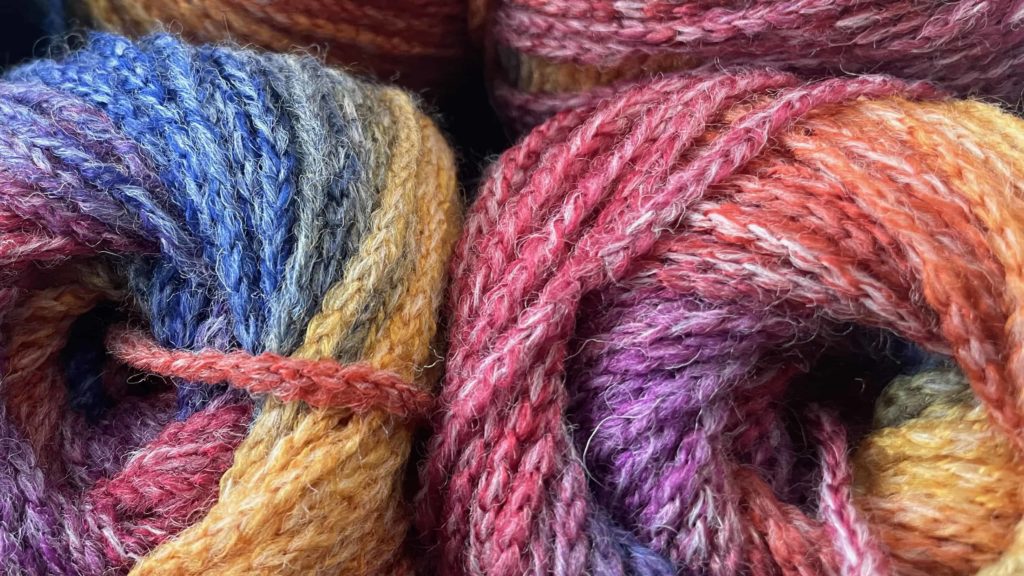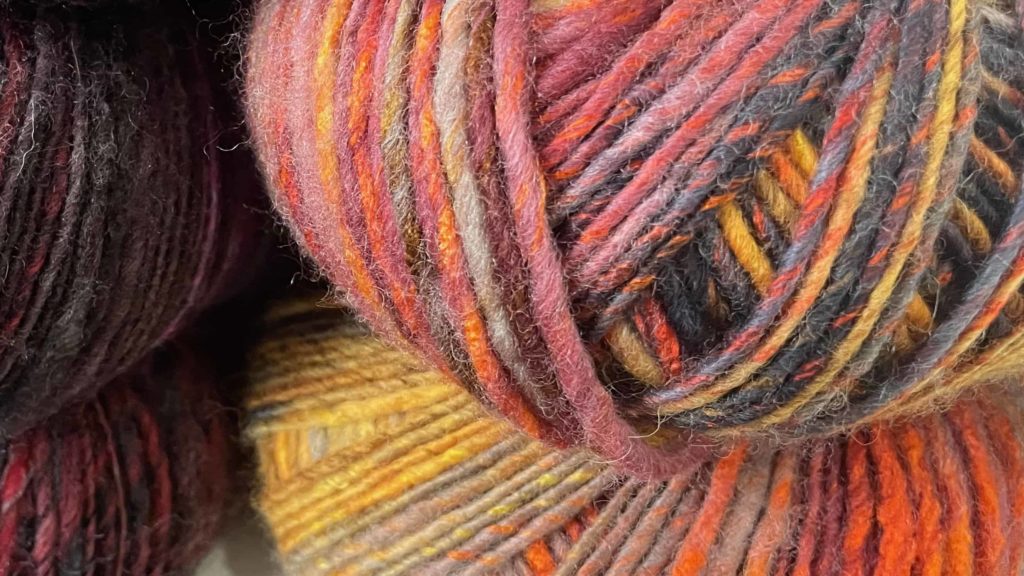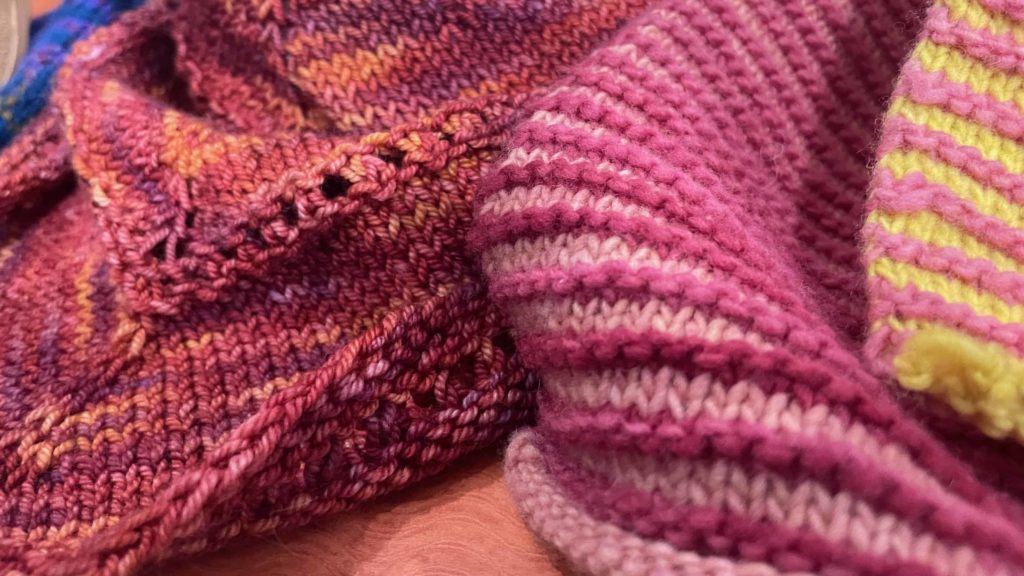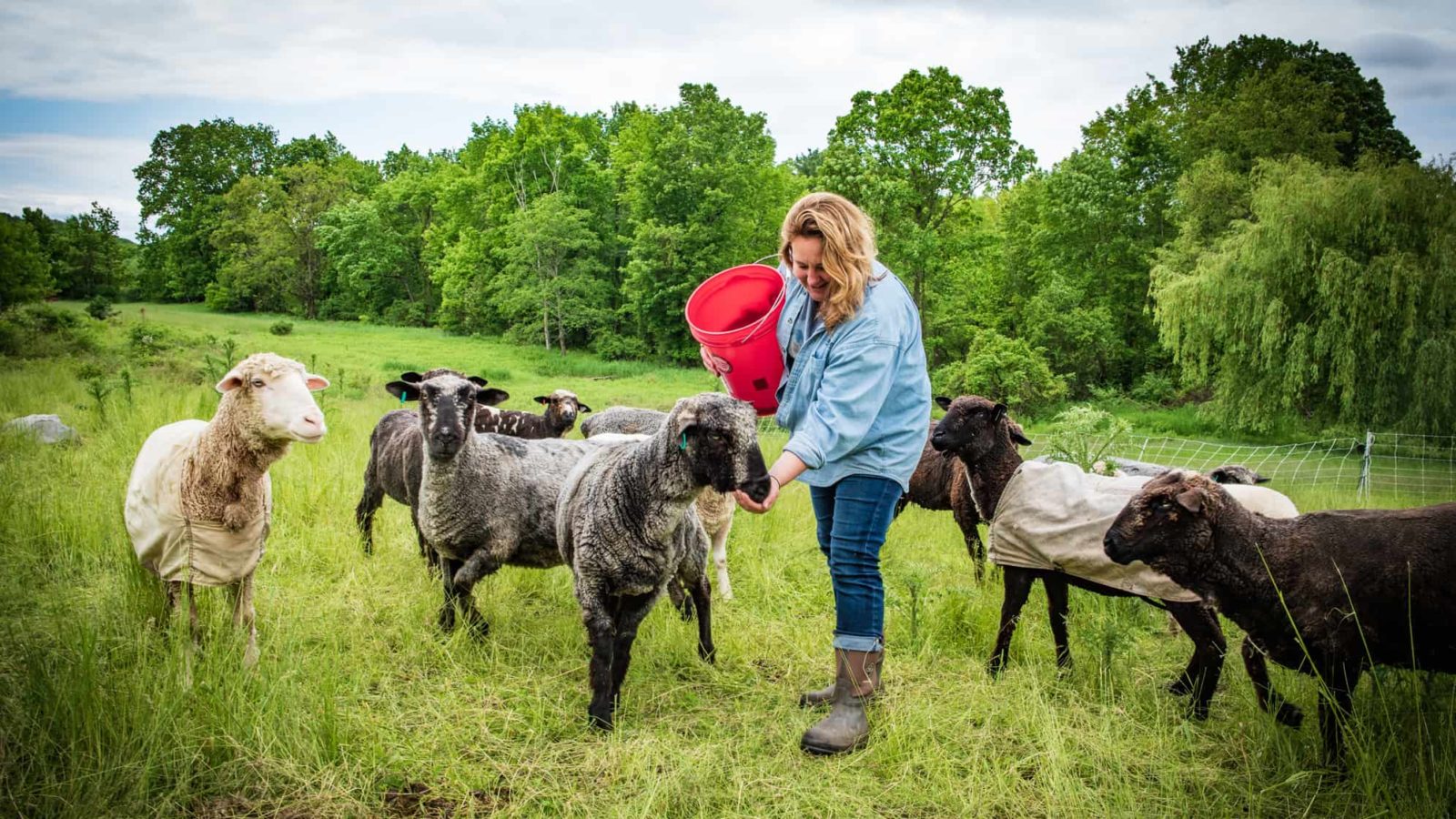It’s a quiet movement, sliding the yarn over the needle, pulling the loop through and repeating. The the feel of wool can be warm and earthy in your hands. It is soothing on a winter day, in the the dark early evenings after dinner.
“Knitting is a journey,” says Beth Phelps, owner of the Spinoff Yarn Shop in North Adams. You associate what you’re making with the events in your life while you’re making it.
She is tapping into a growing regional fiber scene where Massachusetts meets Vermont and New York — where generations of farmers come together with skilled workers from the mills, artists and local people who like the feel of making and a connection with the land.
A local yarn shop can glow with color on a cold afternoon, and Spinoff is bright with natural light to show the hues as they will look out in the sun.
Phelps carries yarns from many kinds of fibers, most of them natural.They are spun from cashmere and mohair, cotton and linen and silk. She carries wools from around the world — and hand-dyed yarns in gradations of color from Freia Fine Handpaints, just downstairs. And she carries yarns spun from the alpacas she raises.


For people who don’t grow their own, finding locally grown yarns or fleeces can be a challenge.
Over the border in New York, the Hudson Valley Textile Project has emerged to reckon with it.
Gail Parrinello, owner of the Cornwall Yarn Shop in Cornwall, N.Y., has joined Mary Jeanne Packer owner of Battenkill Fibers Carding & Spinning Mill in Greenwich, N.Y., in an effort to help makers — spinners and weavers, knitters and artists — meet the farmers who are raising local sheep and goats and alpacas.
They are mapping a growing regional fiber scene, Packer said.
She spins yarn at Battenkill Fibers for customers around the country and across the world. She once walked into a yarn shop in Norway and found a whole wall of yarns Battenkill had made. In the last week, she said, she has talked with a farmer in Buffalo, N.Y., and made contact with an island in Washington state, and with Raleigh-Durham and Portland, Oregon. And she had an order to Burlington, Vt.
“Starting a mill was a life dream,” she said. “I have a degree in engineering, and I’m a lifelong knitter. I owned a yarn store, and I noticed a disconnect in the local economy between farmers with materials and knitters who wanted them.”

Sheep contemplate a quiet morning at Hancock Shaker Village.
She believed she could create jobs for local people with the skills she needed. She got a loan for used textile equipment, and re-created a textile mill, and got it up and running in 2009. Local people have made it possible, she said. Not every community could support her. She works with an electrician retired from a paper mill and an engineer retired from working in the labs Perdue University. Her neighbor retired from a machine shop in the 1970s. One of her partner’s friends is a stainless steel welder …
Her equipment comes from the 1980s and 1990s, she said and some as old as the 1960s. The oldest, the pin drafters (part of the process of preparing combed wool for spinning) are completely rebuilt. She has a spinner made in Italy in the 1980s and a second from the same manufacturer that shipped from Portugal. It was an adventure getting it here, she said. It came in many pieces. A shipping container wound up yard, and she called another neighbor with a fork lift tractor to help her move it.
She got the new mill up and running. And then in June 2010, the building burned to the ground. She still had wool stored, she said, but she lost the new mill entirely. Local friends volunteered to sort the wool and encouraged her to keep going, and even invested in rebuilding.


She moved to a new space in August 2010, an she was making fabric there on Christmas eve.
Now she has national accounts, she said, Bare Naked Wools and Knitspot, Quince&Co and more. Those accounts have helped to set her up firmly and work with the small farms she started the business to serve.
Some of those farms have grown with her, she said. Wing and a Prayer Farm in Shaftsbury, Vt. has an Instagram with more than 30,000 followers. They raise Alpacas, Angora goats, Cashmere goats, and a variety of sheep, including merino, Wensleydale, Teeswater, and Vermont’s first Valais Blacknose … and hand-dye their yarns in shades from red as an heirloom tomato to a deep choreopsis gold.
But for knitters, spinners and weavers, finding local fleeces and yarns is still a challenge, she said. And for farmers, the more steps they take, the more time and cost they take on.
This is where the Hudson Valley Textile Project steps in, to support a local market for people looking for the raw materials.
Spinners will want fleeces. Weavers and knitters will want local and natural yarns.


Phelps has sent her own fiber to Battenkill in the past. She began at Sweetbrook Farm in Williamstown with maple syrup, a farm shop and a herd of alpacas. They are agile and amiable creatures native to South America, with soft curling hair.
“I was intrigued by fiber,” she said.
She had learned to knit as a girl from her grandmother, and as an adult she came to fiber arts casually. She tried quilting, took a class on knitting and carefully made a sweater. She knitted casually on and off, as children came.
Running the farm store at Sweetbrook revived her interest, she said. She too wanted to raise her own fiber, and alpacas are known to be healthy and sturdy.
And then she too weathered changes in her life. Two years ago a fire destroyed her barn and sugarhouse.
As she rebuilt, she moved her yarn store, first to downtown Wiliamstown and then into the newly renovated Norad Mill — alongside local businesses from computer repair to vintage records and vinyl, mead and berry wines, artist studios and the Tunnel City coffee roastery.
She still has 15 alpacas, and a llama, and they are gentle, she said. They don’t like to be handled, but as long as they can keep their balance they will keep calm. They can have strong opinions too. One of her hembras (females), Mimi, was friendly when she was young, and since she has had crias (babies), she has become more spirited.
They can live to be 20 years old, Phelps said, and she still has all of her herd from Sweetbrook Farm, though she is no longer breeding them — she has as many as she has room for.
She shears once a year and she carries some wools from her alpacas in the shop, blended with longwool from sheep, because yarn made entirely from alpaca wool tends to stretch.
And she teaches. People will come in with a pattern and ask questions, she said. Before Covid she also ran an afternoon knitting group, and a few people still come in informally to talk. For people who want more help and time, she offers lessons. She finds it easier to teach one-on-one, she said. People can set their own times. Beginners can start with simpler projects and move gradually through new skills: a scarf, a hat, a pair of socks, a pattern of colors or stitches.
“Some people are adventurous, and they’ll try anything,” she said. “Some learn knit and perl and go off on their own.”
‘Some people are adventurous, and they’ll try anything. Some learn knit and perl and go off on their own.’
She has learned from her visitors too. Prompted by their questions, she took classes to learn lace knitting, textures and color work, dye-work and spinning, and the math to adapt a pattern to fit different sizes. As a final project, she designed a sweater.
She was working on a sketch for it, she said, and she was fascinated by the Fibonacci sequence. This is a set of numbers starting from 0 and 1, in which each number equals the sum of the two numbers before it — 0, 1, 1, 2, 3, 5, 8 …
She wanted to play with that sequence, and she designed cloth in stripes of color, with the knitted rows in Fibbonacci numbers. They follow a pattern that occurs over and over again in the natural world. It can map the branching of limbs, the set of leaves on a stem, the bracts (scales) on a pine cone … or the spiral of a nautilus shell.

